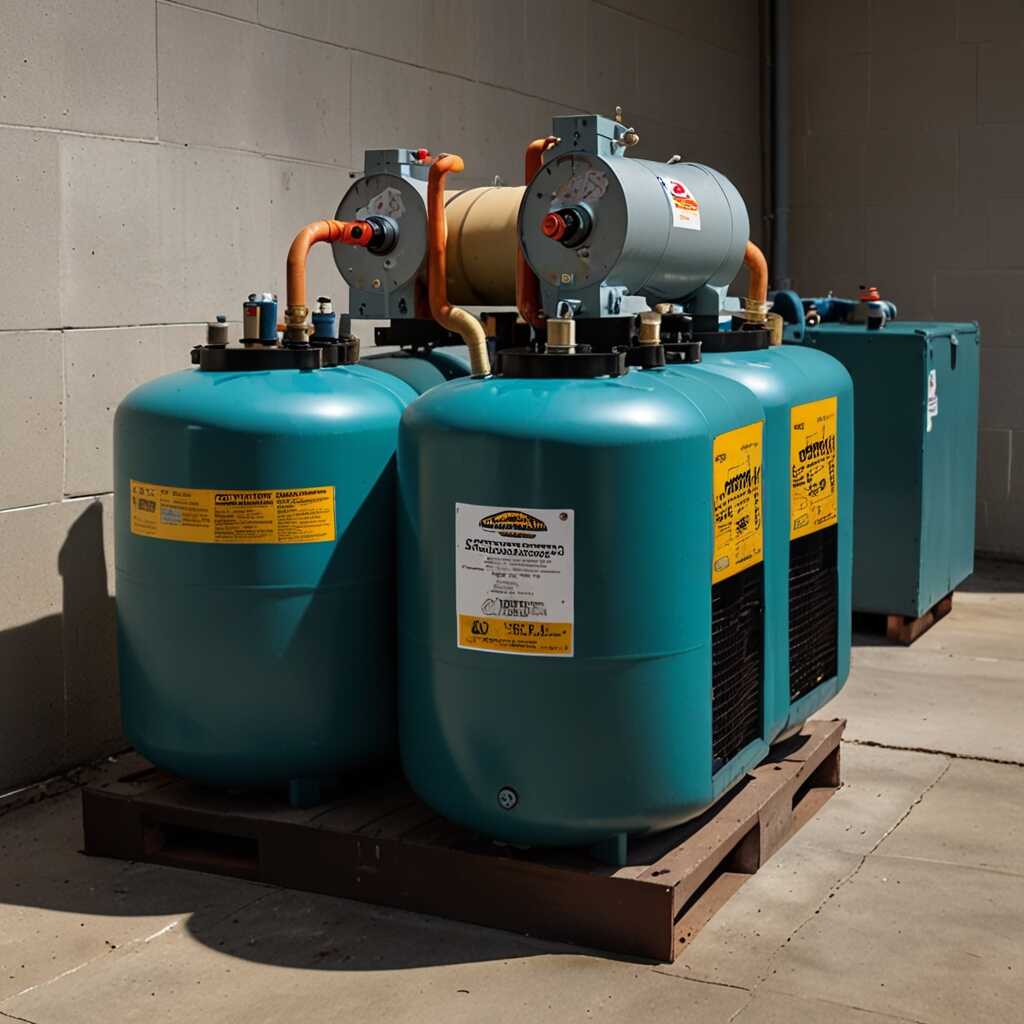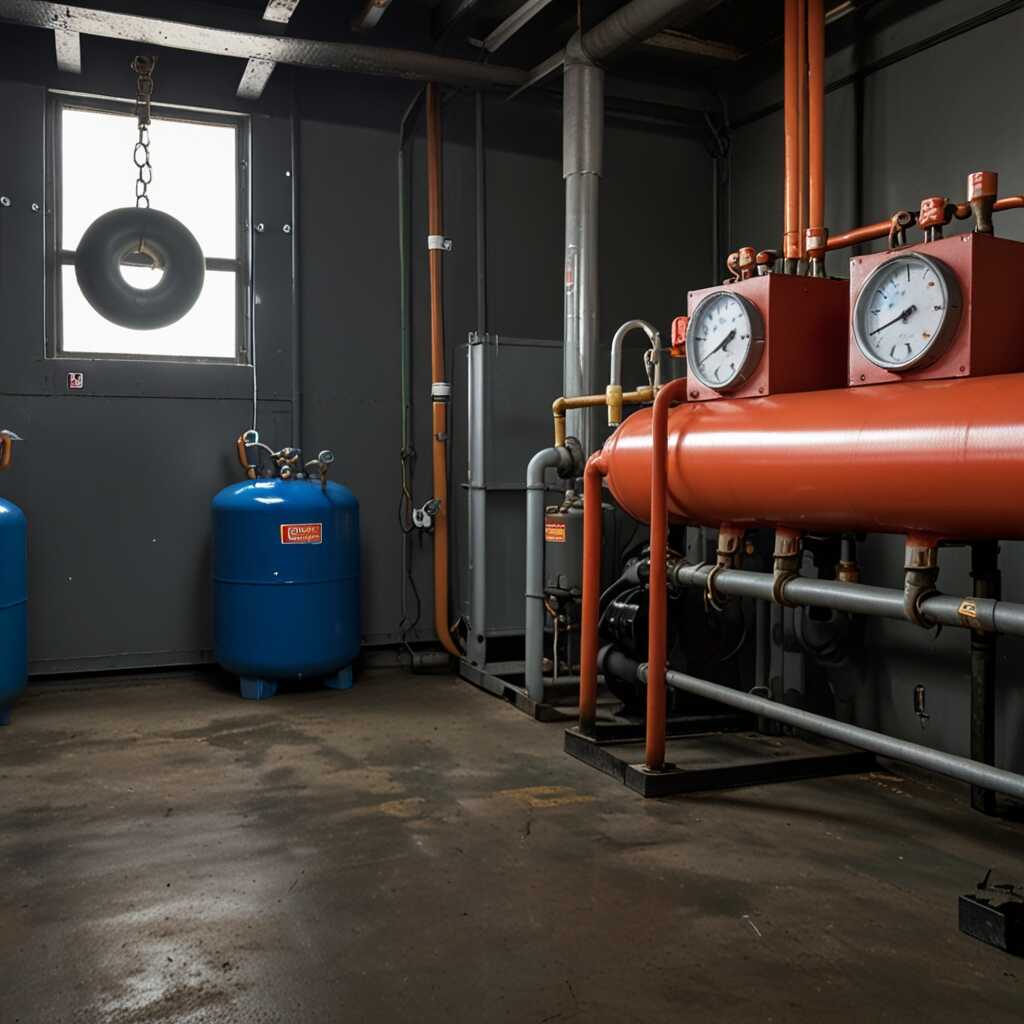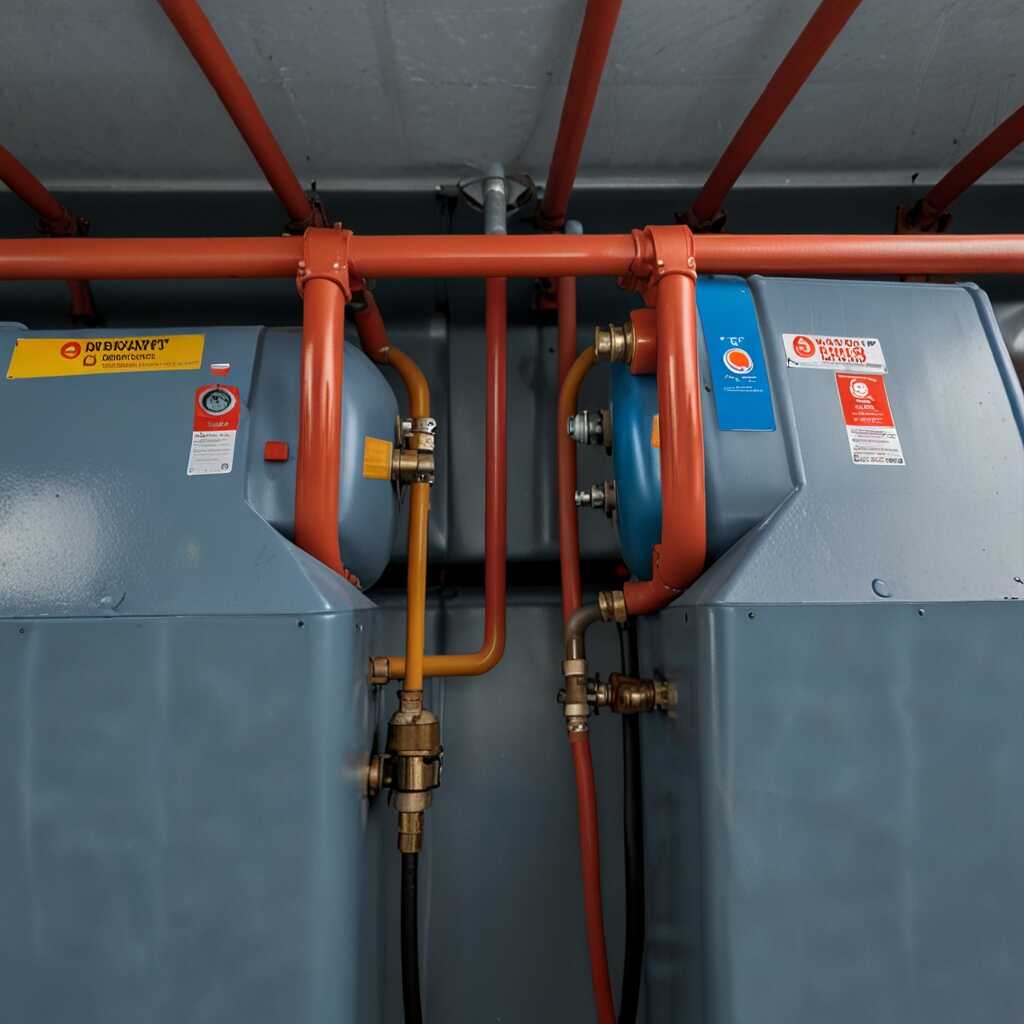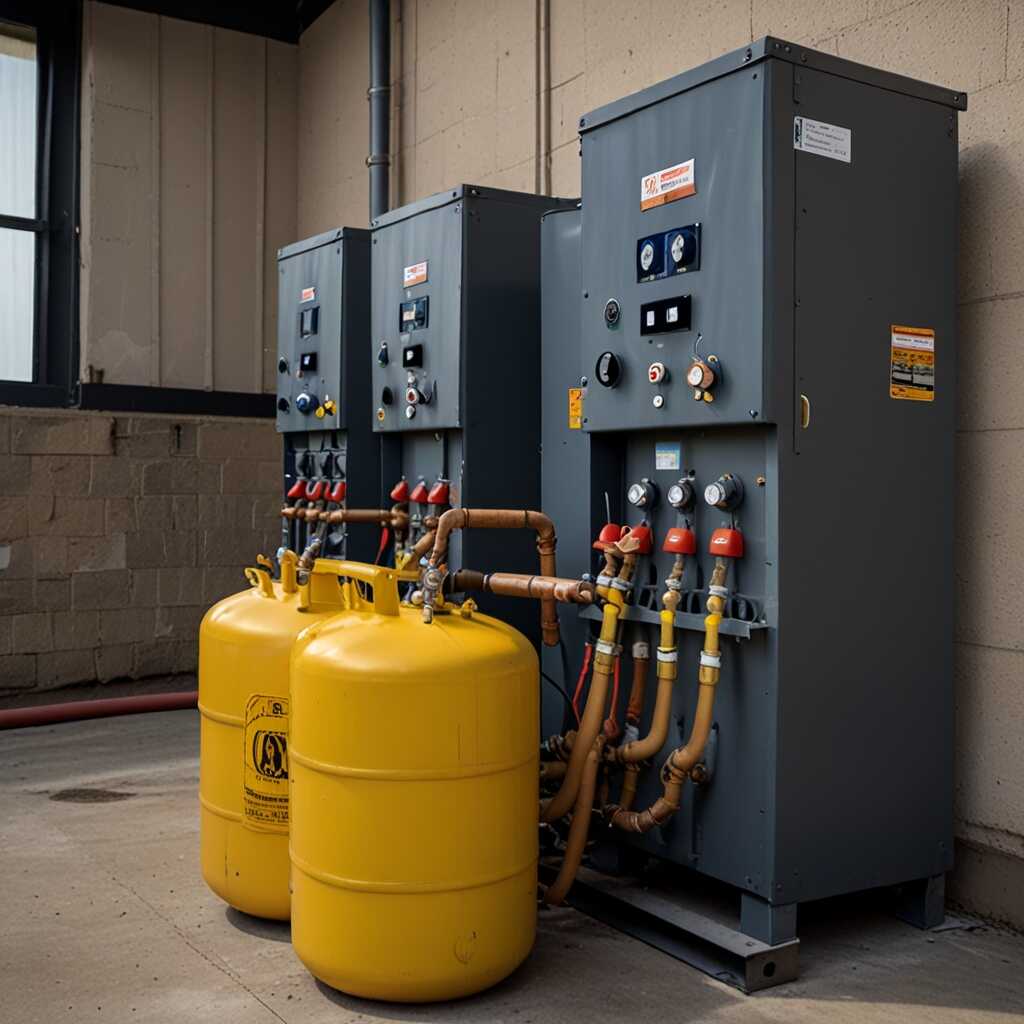Refrigerant recovery machines with temperature sensors play a crucial role in preventing overheating damage. These sensors help maintain optimal operating conditions, ensuring the machine runs efficiently and safely. At Refrigerant Recovery Pro, we provide HVAC professionals with actionable insights on how these devices function effectively in their operations. Understanding the importance of temperature monitoring is essential for enhancing equipment longevity and performance in refrigerant recovery.
Understanding the Role of Refrigerant Recovery in HVAC Systems
Refrigerant recovery is the process of capturing and storing refrigerants from HVAC systems. This process is essential for preventing environmental harm and ensuring safety during maintenance. Refrigerant recovery machines include critical components like compressors and temperature sensors to enhance reliability. These machines significantly improve HVAC system efficiency by lowering potential energy usage and ensuring environmental compliance. Proper recovery methods can lead to measurable safety improvements and energy savings often quantified in percentage terms.
Key Features of Refrigerant Recovery Machines
Key features of refrigerant recovery machines include temperature sensors that monitor system performance reliably. These sensors help technicians detect overheating, which can indicate issues like blocked airflow. Machines are designed with durable compressors that enhance efficiency by quickly and effectively removing refrigerants. Many models also include automatic shut-off mechanisms for safety. This ensures that under high-temperature conditions, machines operate within safe limits. Understanding these features allows HVAC professionals to make informed equipment choices that help enhance overall system performance and reliability.
How Temperature Sensors Function in Refrigerant Recovery Machines
Temperature sensors play a vital role in preventing overheating in refrigerant recovery machines. They monitor the operating temperature of the unit and provide real-time data. This ensures that the machine operates within a safe temperature range, which protects it from damage. Different types of sensors, like thermocouples and thermistors, are commonly used for this purpose. These sensors offer reliability and performance, enhancing system efficiency. A typical temperature sensor can effectively monitor temperatures usually between -50 to 200 degrees Celsius, providing essential data for optimal operation.
Types of Temperature Sensors in Refrigerant Recovery Machines
In refrigerant recovery machines, different types of temperature sensors include thermocouples and thermistors. Thermocouples are reliable for high-temperature applications, while thermistors provide fast response times within a narrow temperature range. Each type is designed to help technicians promptly identify overheating issues. This real-time monitoring is crucial for maintaining efficient operation and preventing damage. Reliable sensors enable HVAC professionals to act quickly, ensuring the longevity of recovery machines. Evaluating these sensors can help confirm they meet HVAC application needs and enhance overall performance.

Overheating Risks and Their Impact on Recovery Efficiency
Overheating poses significant risks to refrigerant recovery machines. These risks include reduced efficiency, equipment damage, and unsafe operating conditions. Temperature sensors play a crucial role in enhancing machine reliability and performance. They provide real-time data, alerting operators to high temperatures that could lead to overheating. If overheating occurs, it can result in efficiency losses of up to 30%, severely impacting recovery processes. Employing machines with advanced temperature sensors ensures consistent performance and helps prevent these risks.
Understanding the Role of Temperature Sensors in Preventing Overheating
Temperature sensors are essential for maintaining optimal machine performance during refrigerant recovery. They continuously monitor operating temperatures and provide alerts when limits are nearing. This enables technicians to react promptly, avoiding equipment failures. Research shows that machines equipped with temperature sensors deliver better reliability and longer service life compared to those without. Regular testing and calibration of these sensors further enhance their ability to help HVAC technicians optimize recovery efficiency and ensure safe operations.
Key Metrics for Overheating Prevention in Cooling Equipment
- Operating temperature threshold recommended is usually between 75°F and 130°F.
- Temperature sensors can reduce overheating risk by up to 50% in recovery processes.
- Recovery machines can typically recover refrigerant at rates between 1 to 15 lbs per minute.
- Studies show machines without sensors overheat in less than 20 minutes during high loads.
- On average, coolant begins to break down at temperatures above 150°F.
- Integration of sensors can improve energy efficiency by 20% compared to non-sensor models.
- Recovery times can increase by up to 30% without proper temperature monitoring.

Essential Features of Refrigerant Recovery Machines with Sensors
When selecting refrigerant recovery machines with temperature sensors, focus on reliability, performance, and essential features. The best machines usually include advanced temperature sensors designed to monitor refrigerant levels accurately, preventing overheating. Research shows that temperature sensors can enhance machine efficiency and extend the lifespan of equipment. Look for machines that have been tested and reviewed by industry experts. Many reputable brands, including those supported by Refrigerant Recovery Pro, provide comprehensive data on performance. They help HVAC professionals make informed decisions based on proven results in the field.
Types of Temperature Sensors and Their Impact
Refrigerant recovery machines typically use thermocouples and thermistors as temperature sensors. Thermocouples are known for their durability and fast response time, which enhance the machine’s overall performance. On the other hand, thermistors provide precise temperature readings, making them excellent for maintaining refrigerant recovery efficiency. Choosing a machine that combines both types of sensors can deliver great performance. This combination ensures reliable temperature monitoring and durability, ultimately improving machine reliability. Professional reviews often highlight the importance of these features for long-term effectiveness.

Safe Operating Procedures for Refrigerant Recovery Machines
Safe operating procedures for refrigerant recovery machines are essential to ensure reliable performance and maintain safety standards. First, always check and understand the manufacturer’s operational manual before beginning a recovery process. Use temperature sensors to monitor the refrigerant temperature during recovery. This helps prevent overheating and potential damage to the equipment. Regular testing of the machine ensures it works at optimal efficiency. Operators should wear personal protective equipment. This includes gloves and goggles, to mitigate risks associated with refrigerant exposure. Regularly review and document equipment performance. This practice helps identify any inconsistencies in operation that could lead to safety or performance issues.
Importance of Temperature Sensors in Recovery Machines
Temperature sensors play a crucial role in refrigerant recovery machines. They ensure that the operating temperature remains within safe limits for efficient recovery. When the temperature approaches the upper limit, these sensors trigger alerts. This preventive feature enhances operational safety. Reliable temperature monitoring helps technicians act quickly to prevent overheating. Understanding temperature thresholds enables HVAC professionals to maintain equipment integrity. This is essential for compliance with industry regulations and standards. Moreover, consistent monitoring leads to improved reliability and greater efficiency in refrigerant management practices. Equipment reviews reinforce the importance of choosing a recovery machine equipped with advanced temperature sensors.
Advantages of Smart Temperature Monitoring in Refrigeration Units
- Enhances safety by preventing equipment overheating during operation.
- Integrates seamlessly into existing refrigerant recovery machines.
- Provides real-time feedback on system performance, ensuring reliability.
- Reduces maintenance costs by early detection of potential failures.
- Improves overall efficiency, maximizing refrigerant recovery and reducing waste.
- Increases the lifespan of recovery machines through careful temperature management.
- Enables compliance with industry regulations regarding safety standards.

Maintenance Practices to Prevent Overheating in Recovery Machines
Essential maintenance practices include regular inspection and cleaning of air filters, checking refrigerant levels, and ensuring proper airflow. These actions help avoid overheating by enabling the machine to operate efficiently. Servicing directly impacts the reliability and overall performance of refrigerant recovery machines across various HVAC settings. Ideally, temperature sensors should be tested every six months to ensure they function correctly and provide accurate readings, thereby preventing overheating.
Importance of Airflow in Recovery Machine Performance
Airflow is critical in enhancing the performance of refrigerant recovery machines. Ensuring that air filters are clean maximizes airflow, which helps maintain optimal operating temperatures. Restricted airflow causes machines to overheat and decreases efficiency. Regular checks can prevent debris from blocking vents, allowing the machines to perform reliably and consistently. By investing time in maintenance and monitoring airflow, HVAC professionals can ensure that their recovery machines operate at peak efficiency.
Understanding Regulatory Requirements for Refrigerant Recovery
Understanding the regulatory requirements for refrigerant recovery is essential for HVAC professionals. Key regulations include the Clean Air Act and EPA regulations, which establish guidelines to ensure environmental compliance practices. These regulations help protect technicians’ legal interests while promoting responsible refrigerant management. Various government agencies, including the Environmental Protection Agency (EPA) and state regulatory bodies, play significant roles in enforcing these standards. Technicians must stay informed about legal recovery limits, which can vary depending on the refrigerant type.
Essential Agencies Involved in Refrigerant Management
Essential agencies involved in refrigerant management include the EPA, OSHA, and state environmental agencies. These organizations oversee the implementation of refrigerant recovery regulations and ensure compliance with testing and reporting requirements. HVAC professionals must understand each agency’s role and their specific mandates. For example, the EPA enforces laws aimed at reducing ozone-depleting substances, while OSHA ensures workplace safety during refrigerant handling. By remaining compliant with these agencies, technicians can enhance their operational efficiency and avoid potential legal troubles.
Industry Players in Temperature Management for Cooling Solutions
- Company A: Known for durable sensors; however, they may be pricey for budget-sensitive consumers.
- Brand B: Offers cost-effective solutions; their sensors may lack advanced features and precision.
- Manufacturer C: Features user-friendly interfaces; however, their products can be less responsive.
- Firm D: Provides highly accurate readings; their devices often face compatibility issues with older machines.
- Brand E: Known for robust customer support and technical guidance; may have limited product range.
- Company F: Offers a wide variety of options for diverse applications; however, their installation process may be complex.
- Company G: Targets small businesses with easy-to-use sensors; could be less suitable for large-scale operations.
Innovations Impacting Refrigerant Recovery Technology
Recent innovations in refrigerant recovery technologies focus on efficiency improvements and reliability enhancements. Key advancements include the integration of temperature sensor systems, which monitor and control operation to prevent overheating in machines. These sensors help HVAC professionals maintain optimal performance while extending equipment lifespan. Research shows that about 70% of HVAC professionals report noticeable improvements in operational techniques after adopting these new technologies. This highlights the importance of staying updated on advancements in the field to enhance recovery efficiency and compliance.
Temperature Sensors: Enhancing Reliability in Recovery Machines
Temperature sensors in refrigerant recovery machines are essential for preventing overheating, which can damage equipment. These sensors provide real-time data on machine temperature, ensuring operators take action before issues arise. Reliable temperature regulation contributes to consistent operational efficiency, which is crucial for HVAC workloads. Enhanced reliability allows technicians to focus more on service instead of troubleshooting equipment failures. Proven technologies can handle higher refrigerant volumes without overheating, making these sensors a must-have for modern recovery practices.